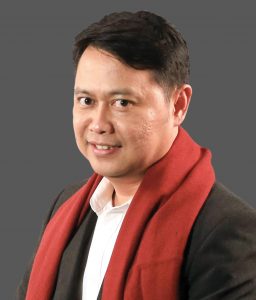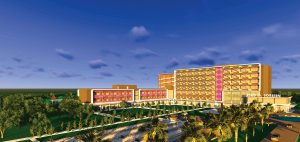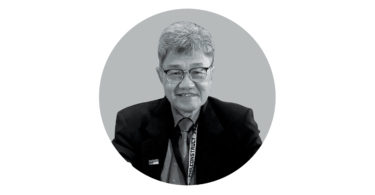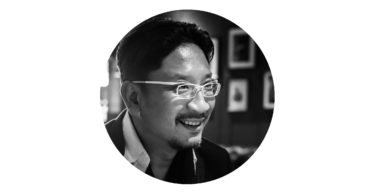There are not many interior designers and architects who are actively involved in the two largest of all design organisations in Indonesia—the Indonesian Interior Designers Association (Himpunan Desainer Interior Indonesia, HDII) and the Indonesian Institute of Architects (Ikatan Arsitek Indonesia, IAI).
 One such personality is Ir. Chairul Amal Septono, MTp, IAI, HDII. Since graduating with an architecture degree from the University of Jakarta and a master’s degree in urban and regional planning from Gadjah Mada University, Chairul has been involved in IAI Jakarta since 2001 and currently serves as the chairman of HDII Jakarta (since 2015). He is also a member of the Indonesian Construction and Occupational Safety Experts Association (Asosiasi Ahli Keselamatan dan Kesehatan Kerja Konstruksi Indonesia), Network Twentyone International, and Indonesian Chamber of Commerce and Industry (KADIN Indonesia).
One such personality is Ir. Chairul Amal Septono, MTp, IAI, HDII. Since graduating with an architecture degree from the University of Jakarta and a master’s degree in urban and regional planning from Gadjah Mada University, Chairul has been involved in IAI Jakarta since 2001 and currently serves as the chairman of HDII Jakarta (since 2015). He is also a member of the Indonesian Construction and Occupational Safety Experts Association (Asosiasi Ahli Keselamatan dan Kesehatan Kerja Konstruksi Indonesia), Network Twentyone International, and Indonesian Chamber of Commerce and Industry (KADIN Indonesia).
His involvement in many organisations in various fields did not make him neglect his long-standing architecture and interior practices. In addition to completing the project at Lambung Mangkurat University, Banjarmasin, South Kalimantan, the principal and founder of unionEQUIL and CArchitect is currently involved in the design project of a smart living hostel in Jatinangor, West Java.
How did you start your career in architecture and interior design?
Actually, my initial goal was to be an engineer. All I knew then was that the building designer was an engineer. Then I entered the architecture department and graduated with a Bachelor of Architecture. While studying, I started to take on projects by helping friends make architectural drawings.
After graduation, I worked for several companies that managed many interior projects, so I was exposedto the interior project environment. With that experience, my colleagues and I started a business in the field of interior design, especially for kitchens and bathrooms.
You started unionEQUIL Studio. What is the meaning of the name of your interior design firm?
Union means unity, while EQUIL means equilibrium. If you put those two together in our work, we are able to produce unity and perfect balance, both physically and non-physically, whether in a product, or in business and management.
What have you learned from your wide range of projects?
I have done small and large-scale projects. In my opinion, both have unique and interesting experience values. For example, at the beginning of my career, I was engaged in interior projects, especially furniture, where I learned a lot about details. In large-scale projects, many experts from various related professions will usually be involved. At that point, communication and people skills become valuable lessons.
What is the key aspect of your design process?
For me, the most important part is communication, where we will be able to assimilate perceptions between the clients and our team. It is important to extract as much information as possible about the project to be designed. Once the communication goes well, the project information can be more accurately used as the basis of the next step in the design process.
How did you become involved at HDII?
It was very simple. I usually go to the IAI office, which was located adjacent to the HDII office. Sarah from the HDII secretariat invited me to be a member of HDII, as many of her fellow architect friends were also HDII members. After becoming a member, I was then involved in several activities and was later invited as an activist in the HDII organisation.
What challenges was HDII facing when you first became chairman back in 2015?
As a professional organisation, HDII needs to become a bridge for its members to be able to join hands with stakeholders—universities that produce candidates for interior designers; industries, such as material and media industries; and the government. Therefore, our tagline for our vision and mission is ‘link & match’.
How do you see the world of architecture, interior design and construction developments in Indonesia?
Along with the rapid development of information technology, the world of architecture, interior design, and construction is also moving very quickly. Thanks to media, nowadays, there are many people who ‘dare’ to engage interior designers’ and architects’ services. The trends or tendencies that occur are not only limited to style, but also begin to touch on the design process, design technology, implementation technology, building materials, and more. Essentially, the current situation has been being at the effect level that touches the function of the design, both to the human and environment.
What is your opinion on the use of smart technology in the interior and architecture world?
Smart technology is designed to facilitate and benefit humans. Jakarta, in the late 1980s, has begun adopting smart and intelligent buildings that are able to change the way buildings are used and managed. Currently, smart technology is not only used in architecture and interior design, but it has also penetrated the city and region’s design levels through the concept of smart cities, as almost all activities and systems can already be done and facilitated using a smart phone.
Local wisdom is an issue that often appears in the world of design in Indonesia. What do you think about it?
I think the design process must be contextual. As a large country with a huge population, as well as diverse tribes, cultures and nature, Indonesia has a lot of potential in the development of interior design and architecture. For example, if an interior designer or architect can master the culture and art knowledge from one of the tribes in Indonesia, then he or she will become a much-sought-after design expert who is likely to give birth to new forms of contemporary contextualised design.
What are your dreams, personally and as chairman of HDII Jakarta, that you wish to be realised in the near future?
Personally, I want to see quality improvements to public spaces, both interior and architectural. We have many quality Indonesian interior designers today, but they are still not widely known by the public. As the chairman of HDII Jakarta, I will try to introduce and publish their work through design contests, where their works can be viewed directly by many people. With our ‘link & match’ concept, HDII has a vision that government, universities and industries will intensively collaborate to improve the human resources of interior designers and architects, as well as the work they produce.

 Malaysia
Malaysia Hong Kong
Hong Kong Singapore
Singapore Tiếng Việt
Tiếng Việt ประเทศไทย
ประเทศไทย












